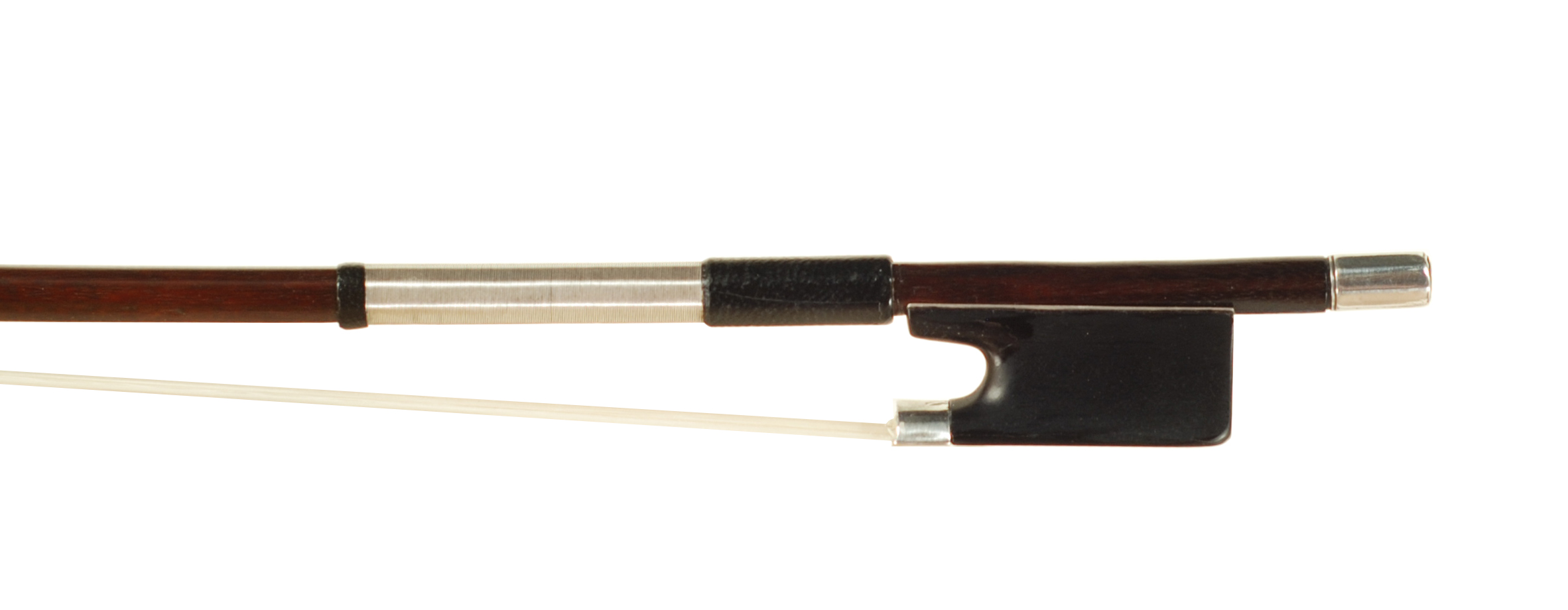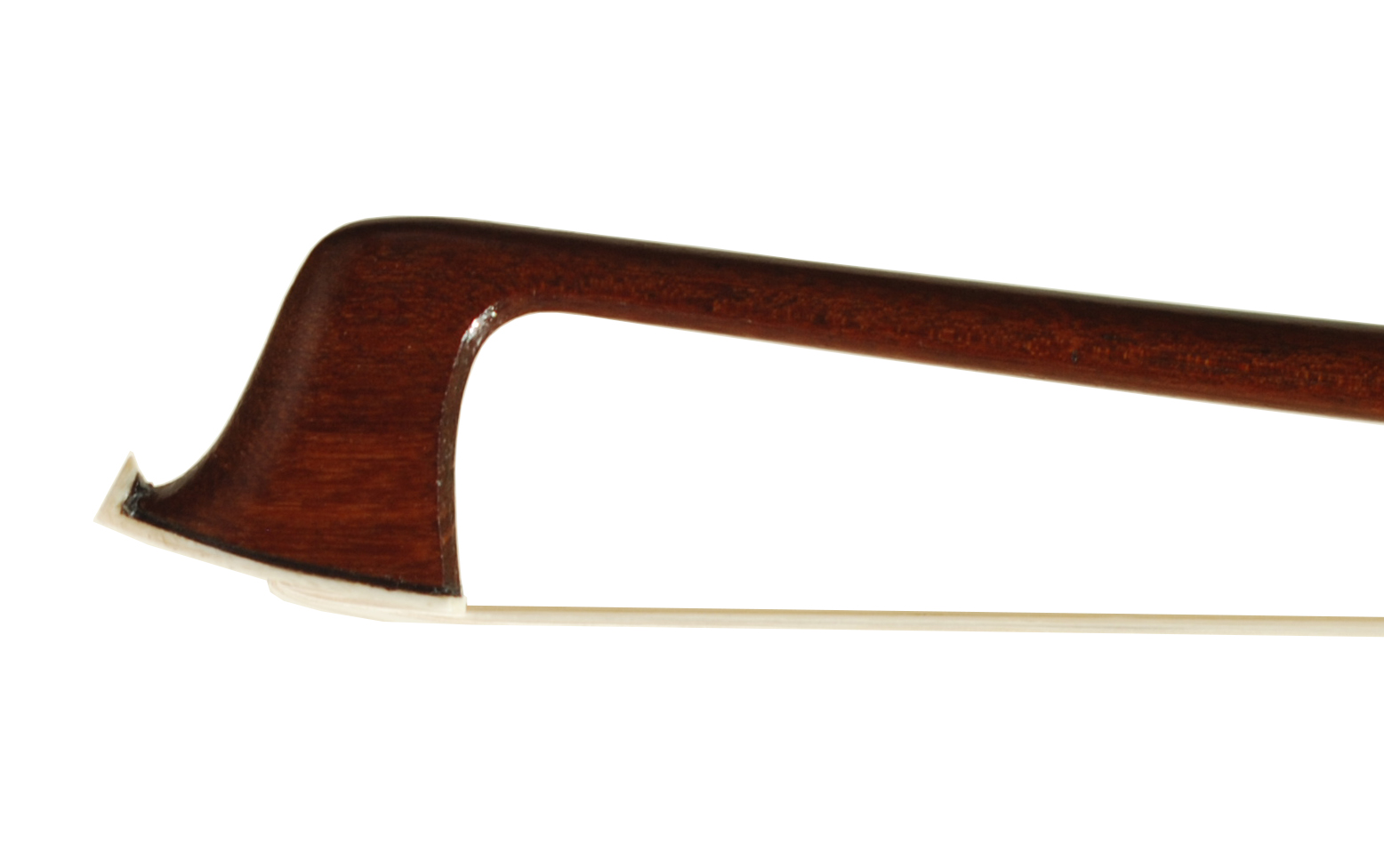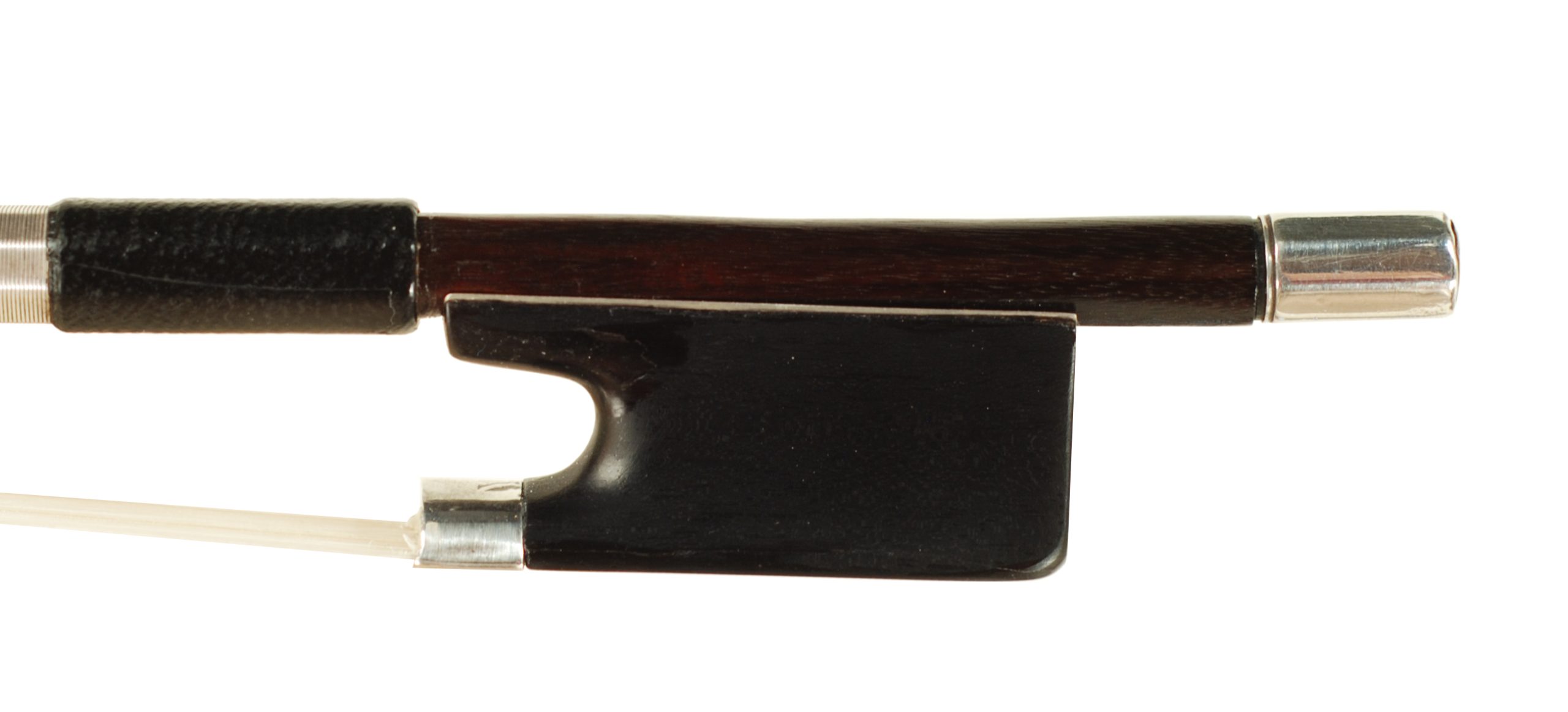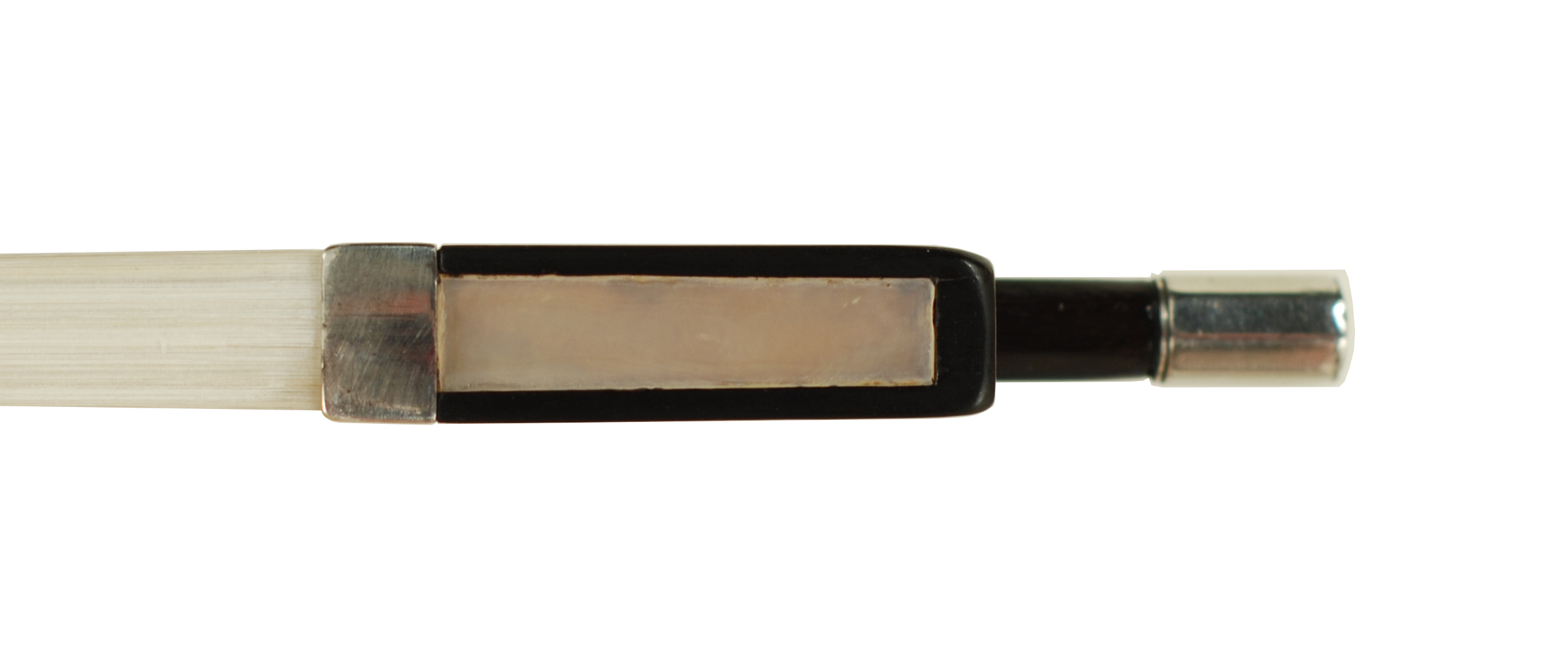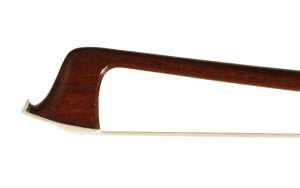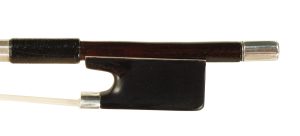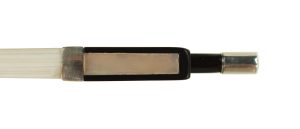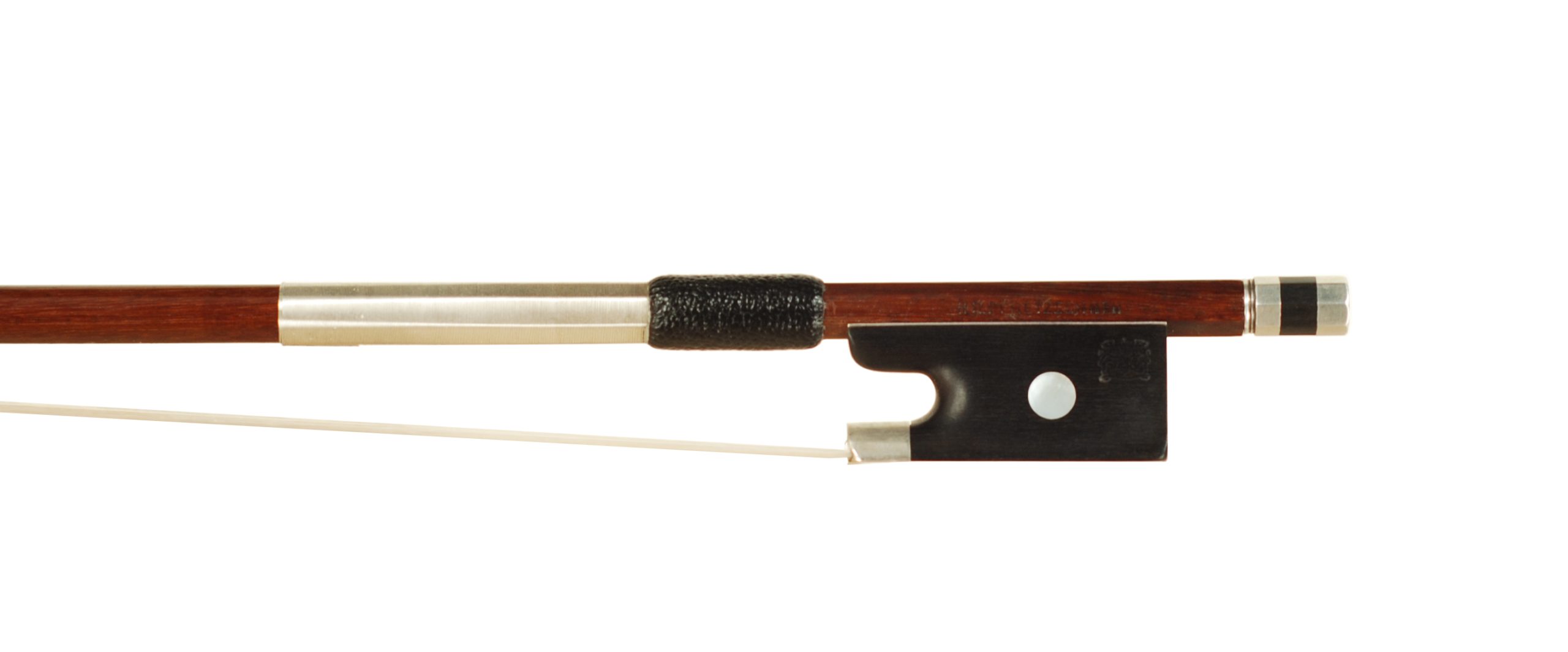Fine Violin Bow Stamped PECCATTE – Saxony/Klingenthal Region circa 1880-1900
$2,750.00
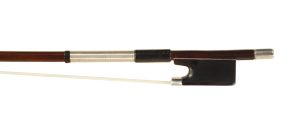
Stamped:
This bow is from the late 19th century. This region of Germany was known for fine artisans and people of the bow making craft who didn’t just settle for half-hearted work. This bow is very neat, no, cool! In the 1800’s the violin and piano were the most popular forms of musical entertainment. To meet the demand for string instruments, a thriving industry developed in a remote area of eastern Germany on the Czech border, a region known as Western Bohemia. The center of this instrument making industry was the state of Saxony. It was by no means a new industry for the area. The area had been the center of German violin making since the early 1600’s. Many of the string instruments and bows made there were then shipped to the West. These makers in Klingenthal (about 35 miles north of the town of Markneukirchen) and many surrounding villages had mostly anonymous skilled craftsmen turning out simple but well-made instruments and bows. Many marketed their bows with famous French maker’s names. The elite makers of that day in Saxony would have been trained in and around the Markneukirchen area and then would have moved on to work in larger cities such as Berlin, Dresden, Munich, and Prague. This bow was made in Germany and was not made by the famous French bowmaker Dominique Peccatte.
The stick is a WOW! dark chocolate pernambuco bow. It is round in section and mounted in sterling silver. The “PECCATTE” stamp is a larger older font style; I would say slightly bold in its day, found on the player’s side of the stick above the frog close to the thumb grip. There is no origin stamped on the butt of the bow, nor anywhere else. The pernambuco wood is firm and the grain tight. This is older wood probably growing in the mid-1700s in Brazil. It was then purchased in log form to be shipped to Germany. It would have been cut, stacked, and dried in Germany for another 15-20 years before being used for a bow. This stick has been in my collection of bows to restore for many years- 25 plus years.
The bow received extra cleaning and a new bone tip. I saved the sterling silver winding but replaced the thumb grip and lapping that encapsulated the silver with goat leather. The tip is erect, with a gorgeous nose and strong back to the head. The frog is original, called a blind eye ebony frog. It is a half-lined frog which is old, beautiful, classy, and very well executed by the maker. The frog is slightly smaller than a 20th century maker’s frog in its width, but the maker added a couple of millimeters of length to the frog. The frog has natural wear and feels fantastic in the hand. The lining in the frog is held in place by two very small silver pins. The button is solid silver cap with one turn in the collar. The pearl slide is white abalone, traditional for the period. This is an excellent bow for the serious player, fully restored, ready for another 140 years.
Weight fully haired 58.0 grams
